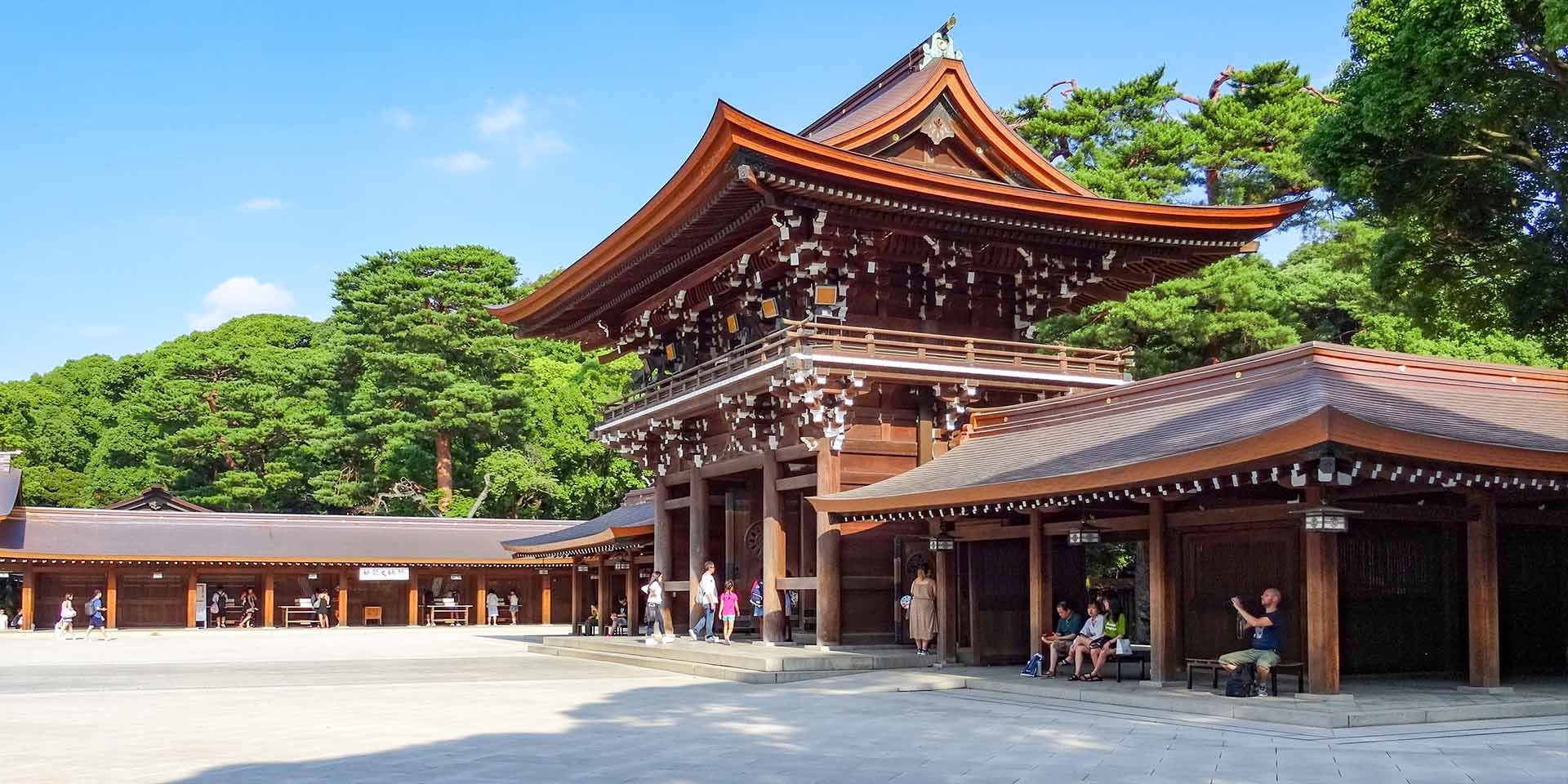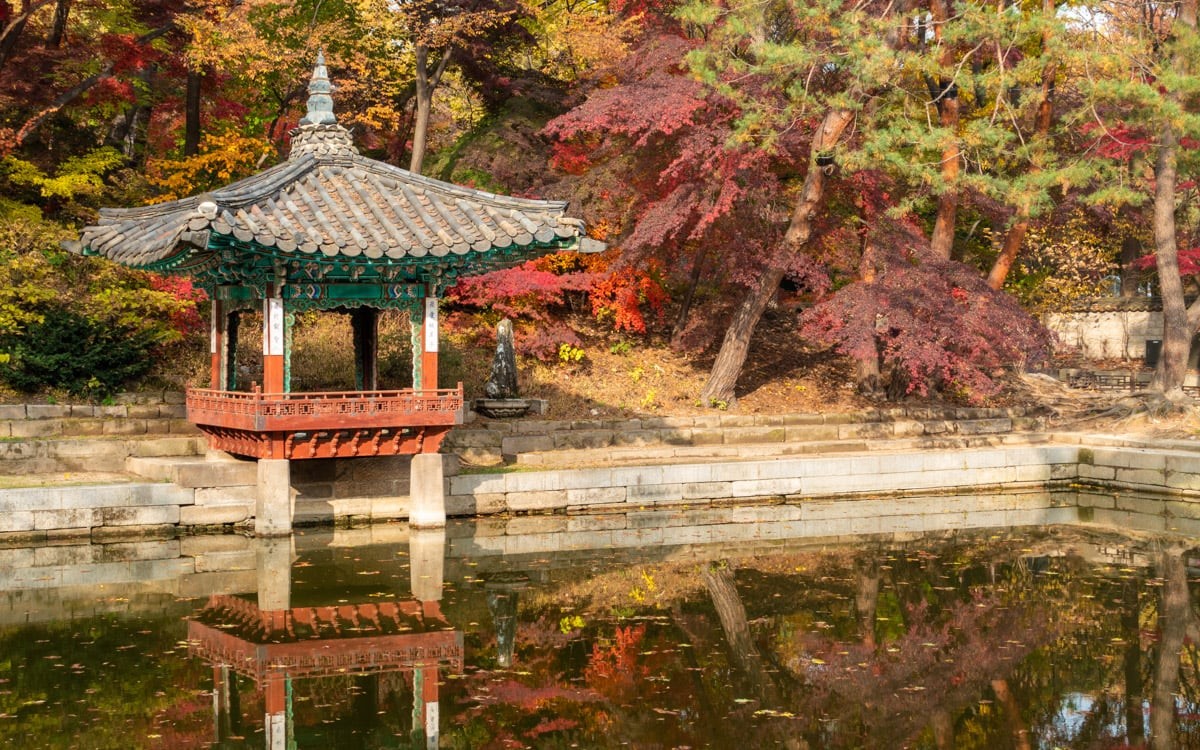
Meiji Shrinw: A Serene Oasis in the Heart of Tokyo
Amidst the bustling urban landscape of Tokyo, a tranquil sanctuary awaits those who seek peace and reflection: Meiji Shrine (Meiji Jingu). Located near the vibrant districts of Shibuya and Harajuku, Meiji Shrine is a sacred Shinto site dedicated to Emperor Meiji and Empress Shoken, two of Japan's most revered figures. This iconic shrine, surrounded by a lush forested park, offers a stark yet harmonious contrast to the modern metropolis that envelops it. For locals and visitors alike, Meiji Shrine is not just a religious landmark, but also a place to reconnect with nature and tradition in the heart of one of the world’s busiest cities.
The Shrine's Historical Significance
Meiji Shrine was built in 1920 to honor Emperor Meiji (1852–1912) and his wife, Empress Shoken. Emperor Meiji is a pivotal figure in Japanese history, as he oversaw the country's transformation during the Meiji Restoration, a period when Japan moved from being a feudal, isolated society to a modern industrial nation. Under his leadership, Japan opened its doors to the world, embracing Western ideas and technologies while preserving its rich cultural heritage. The shrine stands as a tribute to his contributions and to the lasting influence of his reign.
Though the original structure was destroyed during World War II, it was rebuilt in 1958, with great care taken to preserve its traditional architecture and spiritual significance. Today, Meiji Shrine continues to be a place of pilgrimage for Japanese people, where they pay their respects to the emperor and empress, seeking blessings for health, prosperity, and good fortune.
A Journey Through Nature
One of the most captivating aspects of Meiji Shrine is the path leading up to the main complex. As you leave behind the urban sprawl of Harajuku’s lively streets, you step into a sprawling forest known as Meiji Jingu Forest, which covers an impressive 170 acres. This forest contains over 100,000 trees donated from all over Japan and beyond when the shrine was built. The trees have grown into a dense canopy, casting dappled light over the wide, pebbled pathways.
Walking through this serene forest feels like stepping into another world—far removed from the towering skyscrapers and neon lights of Tokyo. The gentle rustle of leaves and the soft crunch of gravel underfoot create a calming atmosphere that invites visitors to slow down, breathe deeply, and appreciate the natural beauty that surrounds them. It’s a unique experience to be in such a peaceful, natural setting right in the middle of Tokyo, and this connection to nature is a central part of the shrine's appeal.
The Torii Gate: A Grand Welcome
As you approach Meiji Shrine, you are greeted by one of its most impressive features—the towering torii gate. This massive wooden gate stands at the entrance to the shrine and is one of the largest torii in Japan, symbolizing the transition from the secular world to the sacred. Made from 1,500-year-old cypress wood, the torii serves as a spiritual threshold, inviting all who pass beneath it to cleanse their minds and spirits as they enter the shrine’s sacred grounds.
The scale of the torii, combined with its rustic simplicity, is both awe-inspiring and humbling. It sets the tone for the rest of the visit, reminding you of the spiritual significance of the place while emphasizing the natural beauty that surrounds it.
The Main Shrine Complex
Upon passing through the forest and torii, you arrive at the shrine’s main complex. The architecture of Meiji Shrine is a beautiful example of traditional Shinto design. Built primarily from Japanese cypress and copper, the structures are elegant in their simplicity, with clean lines and an earthy color palette that harmonizes perfectly with the natural surroundings.
At the heart of the shrine is the honden (main hall), where visitors can offer prayers to Emperor Meiji and Empress Shoken. The atmosphere around the honden is quiet and contemplative, with many visitors performing the traditional act of purification by washing their hands and mouths at the temizuya (a cleansing basin) before approaching the shrine to make an offering. The act of bowing, clapping, and offering a prayer in this serene environment creates a deeply spiritual experience, even for those unfamiliar with Shinto practices.
Beyond the honden, the shrine grounds also feature various other buildings, including a treasure house that holds personal belongings of the emperor and empress, as well as beautiful gardens and paths perfect for leisurely exploration.
Seasonal Beauty: From Spring yo Fall
One of the most enchanting aspects of Meiji Shrine is how it transforms with the seasons, offering a different kind of beauty each time of year. In spring, the shrine’s Iris Garden comes alive with blooming flowers, creating a vibrant tapestry of color. The garden was designed by Emperor Meiji himself as a gift to Empress Shoken, and it remains a favorite spot for visitors who come to see the stunning irises, especially during June when they are in full bloom.
In summer, the forest becomes lush and green, providing shade and coolness in the sweltering heat of Tokyo’s humid months. As autumn arrives, the trees of Meiji Jingu Forest burst into brilliant shades of red, orange, and yellow, offering a breathtaking display of fall foliage. In winter, the shrine’s peacefulness takes on a new character as the crisp air and bare trees add a stark, minimalist beauty to the landscape.
Meiji Shrine as a Cultural Hub
Meiji Shrine is not just a place of worship—it’s also a cultural center that plays an important role in the spiritual and social life of Tokyo. It is particularly significant during the New Year period when millions of people flock to the shrine for hatsumode, the first shrine visit of the year. During this time, the shrine is bustling with activity as people come to pray for good luck in the coming year.
Weddings are also a common sight at Meiji Shrine, where traditional Shinto ceremonies are held regularly. Watching a bride and groom dressed in elaborate kimonos, walking through the shrine grounds with their procession, adds an extra layer of timeless beauty to the experience. These ceremonies are a reminder of the deep cultural heritage that Meiji Shrine represents, offering a glimpse into Japan’s enduring traditions.
A Sanctuary for Reflection
Amidst the fast-paced, high-tech world of Tokyo, Meiji Shrine offers something rare and precious: a chance to slow down and reflect. Whether it’s a quiet walk through the forest, a moment of contemplation at the shrine’s offering box, or simply a pause to appreciate the surrounding beauty, Meiji Shrine provides a sanctuary for all who visit.
For many, the shrine serves as a place to reconnect not only with nature but with their own thoughts and emotions. It’s a reminder that even in one of the world’s most modern cities, there is space for quietude and reflection—a balance between the progress of the future and the serenity of the past.
Meiji Shrine is a testament to the harmonious coexistence of Tokyo’s urban intensity and Japan’s rich spiritual traditions. It offers visitors a rare chance to experience the profound beauty of nature, history, and spirituality all in one place. Whether you’re seeking a moment of peace, a deeper understanding of Japanese culture, or simply a break from the rush of the city, Meiji Shrine provides an unforgettable experience that stays with you long after you’ve left its sacred grounds.
Amidst the towering skyscrapers and flashing lights of Tokyo, Meiji Shrine stands as a timeless oasis, inviting all who visit to breathe deeply, step into the past, and find serenity in the heart of one of the world’s most vibrant cities.





